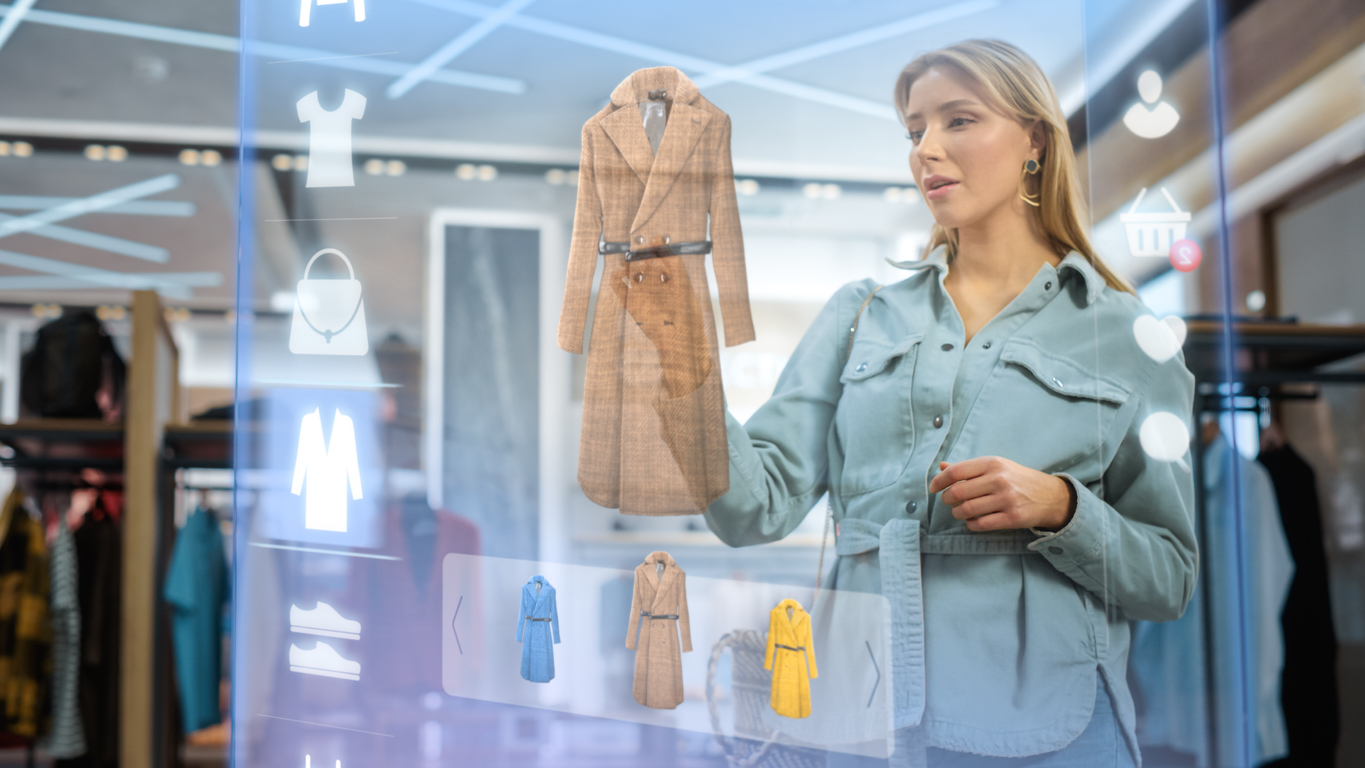
The retail landscape has been drastically changed after being bombarded with the retail trends of 2023 following the aftermath of the 2020’s pandemic and subsequent recovery of 2021 and 2022. Although the economy, consumer behavior, and the retail world itself are never truly predictable, there is a myriad of data that can help paint a better picture.
In this blog, we will examine the most prominent data points suggested by Shopify’s study and analysis of the retail trends of 2023 and provide additional insight and commentary.
Retail Trends 2023: A Sluggish Economy and the New Fear

Retail sales increased from 2020 to 2022 as the pandemic subsided and consumers returned to stores and continued online shopping. Some factors that might have supported this are the increase in PPE sales, consumers returning to hobbies that allowed them to collect cards, toys, and other memorabilia through online transactions, and the need to purchase games, crafts, and other items to keep busy during the lockdown.
Expert data predicts that retail sales will continue to increase to more than $31 trillion by 2025, slowly but surely.
Trade growth, on the other hand, has slowed to nearly negative levels from 2022 to 2023. Experts once again predicted a 3.4% increase at the start of 2022, but by the end of the year, their predictions retreated to a low 1%.
The final factor in 2023’s below-average economic growth is due to the varying degrees of opinion based on the severity of inflation. Gas prices, foods, and products have all risen in price alongside the practice of shrinkflation. The coronavirus has fallen to the bottom of the public’s list of worries, while inflation has become the number one concern for most.
As a result, inflation has affected the consumer spending behavior of nearly everyone, along with the negative ramifications of how businesses operate and venture capitalists trade.
Retail Trends 2023: Personal & Brand Expectations

In today’s world, consumers want everything they buy at a click of a button or faster as they seek out personalized shopping experiences that are responsive to their criteria. This is clearly one of the hottest retail trends of 2023.
Although most shoppers have been staying loyal to their favorite brands, the pressure is on. New brands are emerging all the time, and price isn’t their only concern. More consumers are becoming aware of health, environmental, and social influences when making purchasing decisions.
As a majority of businesses have experienced a customer loyalty decrease, shoppers are trying new brands more than ever. In order to circumvent this, companies have also begun collaborating in order to dip into each others’ audiences to expand.
Collaboration has also proven valuable between brands and specific creators, artists, and other recognizable people. This brings consumers one step closer to connecting with others instead of just a company. In this regard, social media influencers are also prime for boosting customer loyalty and strengthening a brand in the eyes of consumers. This has led to new trends emerging for better or worse, such as ghost kitchens.
As consumers and brands evolve, the landscape shifts with:
- The reliance on social media influencers to engage with customers through social media, along with converting them into purchasers and retaining them as regular customers is the name of the game.
- With the advent of e-commerce and worldwide shipping becoming easier than ever, companies find themselves on a truly global platform for competition.
- Fortnite has proved how the video game industry dominates the digital space when it comes to innovation and immersion through gaming.
- Roblox creates metaverse experiences for its 200+ million monthly users proving to be a platform to consider when attempting to reach its audience.
- The metaverse is slowly growing with brands like Nike who have built a designated space.
Retail Trends 2023: Supply Chain Woes

Even with the recovery and retail trends of 2023, the pandemic of 2020 hit supply chains hard with a shortage of various household goods and foods being high in demand. Although analysts suggested things would normalize during 2023, that hasn’t been the case, especially due to the Russian invasion of Ukraine, resulting in a war.
Businesses have had to adapt in ways concerning the amount of inventory they keep stocked, and how to find more reliable and closer sources for materials and products. Advances in technology tracking systems have allowed companies to monitor traveling shipments so they can catch any delays as soon as they happen or before.
To curb the problems of returns from online purchases, solutions have been implemented to ensure that customers get what they want. Detailed product descriptions are a must, and so are full videos along with 360-degree rotational images. Even augmented reality is being used to make purchases feel as tangible as possible.
Supply chain woes have led to:
- Consumers demand the fastest, next-day delivery services when making purchases online.
- Companies are stocking up on inventory as much as they can.
- Companies looking for multiple ways to source products.
- 68% of businesses are saying supply chain crisis negatively affects their sales and will continue to get worse throughout 2023.
- $184 million in USD revenue losses due to the supply chain crisis.
- Technology is rapidly changing to help monitor and track shipments along with AI-enabled supply chain management to improve logistics costs, inventory levels, and service levels.
Retail Trends 2023: Strategies to Gain Customer Loyalty

The recession has caused shoppers to question their brand loyalty in lieu of rising prices from their favorite brands. With the retail trends of 2023, companies are planning to focus their marketing efforts to convey more value to their customers, especially as some have already planned to introduce new, higher-priced products in order to maintain the prices of current items.
Other companies are also releasing lower-end lines or more value products at lower prices. These companies are planning to hook customers with cheaper products initially and forge customer loyalty once inflation stabilizes and consumer spending once again increases. It’s a smart yet unpredictable gamble at this point.
The last critical factor that companies are examining closely is the role social media plays, primarily social influencers. Studies show that 9 in 10 people follow the brands that they regularly buy from. Due to the lockdown, more people watched unboxing videos and reviews, and it’s yet to be seen how this trend will continue as shoppers are once again out and about.
The main points in this category are:
- Customer loyalty is a top priority and benefits both businesses and consumers.
- Brands must adapt in response to economic uncertainty with as many tactics as possible.
- Profit margins are being drastically reduced and retailers are having difficulty retaining their employees.
- A loyal customer is incredibly valuable to a brand and worth more than short-term sales.
- Companies are resorting to changing their prices as often as daily in order to keep up with inflation, while some are freezing prices in hopes to appease customer satisfaction.
- It’s cheaper for businesses to offer sales to existing customers instead of trying to attain new ones.
- Subscription services and memberships are being offered by nearly every major retailer to keep recurring customers.
Retail Trends 2023: Retailers Blend Shopping Channels into Immersive Experiences

At this point, even with the retail trends of 2023, it’s safe to assume that brick-and-mortar stores are here to stay amidst the prevalence of e-commerce, social media, and the evolving digital landscape. Data has shown that at least half of Gen Z shoppers, who spend more time online than any other generation, still prefer physical stores when shopping. They are also the future of shopping as their spending power grows over time.
Retailers need to do more than just design a basic store layout. A good example is the McDonald’s playground in their fast food restaurants, the food spaces inside Target and Walmart, and the cafe inside Nordstrom or Barnes & Noble. Now Ralph Lauren and Uniqlo have set up coffee shops and playgrounds in their spaces as well.
A store’s theme needs to be able to attract customers and keep them engaged when entering a space. A showroom-style setup has become increasingly popular and effective. In contrast, the rise of autonomous checkout lines without cashiers, along with pickup stations from online orders has become a necessity.
Finally, augmented reality is becoming the new must-have standard of 2023, and direct shopping links on IG or TikTok have become prevalent with their respective audiences. This is a major factor in retail industry trends.
Going into the future of retail, these changes seem inevitable:
- Retail is no longer simply a one-stop destination, rather, stores are only part of the customer’s journey and experience.
- Experiences tailored to indoor physical locations are gaining new ground with more unique immersive interactions and exclusivity.
- Customer service is not as simple as it used to be, and requires even more knowledge, deeper understanding, and more specialized roles in order to keep up with savvy customers.
- 35% of shoppers go to stores for the social interaction and experience offered.
- At least three-quarters of shoppers research products and services online before making their spending decisions.
Retail Trends 2023: Conclusion

In the wake of all of 2023’s retail industry trend concerns, ROAS is declining and the protection of consumer privacy is being increased. However, companies are doing their own data collection and have total control over it all, and it belongs to them forever. Third-party cookies and data are not able to keep up with the demands of customers who crave a more transparent and integrated experience.
With all of these factors at play, it’s going to be a dramatic evolution as the retail trends of 2023 continue into 2024. Nothing is ever certain, and there are multiple routes brands are taking in order to stay relevant and stay on top of the competition. Stay up to date with Retail Wire to gain insight into the industry and learn about all the changes as they happen.
